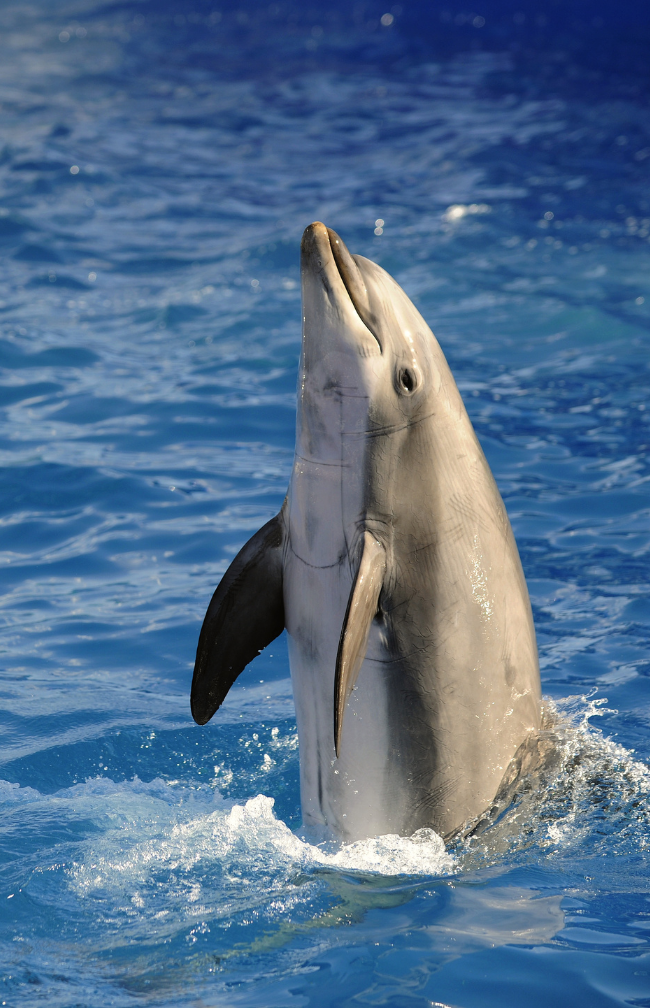OUR MISSION
Dolphins Go-Free’s mission is to provide a humane solution for the re-location and rehabilitation of dolphins currently kept in captivity. It is not an activist movement. Our goal is to build a sanctuary as an international story of excellence, working together with scientists and experts in this field, in order to develop and share knowledge and experiences with similar initiatives.
The ultimate goal is to rehabilitate and prepare the dolphins for a release back into their natural environment. For this ultimate phase we are establishing several contacts in the Caribbean as dolphins living in European marine parks originate from this region and thus can only be released there.
The Project
The Azorean Dolphin Sea Sanctuary & Rescue Centre Project aims to create a permanent marine refuge for the rehabilitation of dolphins that currently live in marine parks all over the world (worldwide there are about 3000 dolphins kept in captivity of which approximately 300 in Europe). As this facility will contain an ideal infrastructure to receive dolphins, such as medical care pools, separation pools and a well-equipped research center, it will also provide an ideal recovery centre for stranded animals such as marine mammals and sea turtles in the region, as this has shown to be a demand.
The rehabilitation center aims to be a unique concept providing the best infrastructure for scientific research and rehabilitation of the animals a.s. The goal is to prepare the dolphins, if their mental, social and physical capacities allow it, for a release back into their natural environment. For this ultimate phase, we are establishing several contacts in the Caribbean as dolphins living in European marine parks originate from there and thus should be released in that area.
Tours around the facility to inform and educate visitors such as local communities, universities should be possible, but the center aims to have a scientific purpose only, so it will not be a place where dolphins are exposed for entertainment. No swimming with dolphins nor therapeutic treatments are envisaged.

Problem statement
There is currently no viable solution when marine centers close but to transfer the animals to other parks, which results in even less space for each animal.
Marine parks throughout Europe are facing more and more difficulties, both financially and animal related. The keeping and caring of bottlenose dolphins demands considerable resources and expert staff. Regulations continue to become stricter due to legal changes, and public opinion towards cetacean in captivity is changing. The increase of the captive population since the 1990s has revealed significant problems for both animal welfare and conservation. Inappropriate and small facilities lead to a severe lack of space, as well as a rising risk of inbreeding and social conflicts among the animals.
The captivity of cetaceans for commercial interests alone no longer has the support of the majority of the public, nor at a political level.
In the last decade, several political campaigns and legislative changes have been imposed on marine parks in various countries.
In all of these, the common consensus was to phase out dolphin captivity by introducing a ban on breeding, stopping the theatrical shows and a ban on the import and export of live dolphins or their gametes for reproduction. However, in all of these cases, dramatic consequences have occurred for the individual animals, leading to a reduction in their welfare.
They have ended up with even less space in the already small tanks along with several other existing animals in a completely unsuitable social configuration. Phase-out policies as well as sudden closures, have, so far, led to stressful and depressing situations for the remaining dolphins and have increased their suffering.
Adding the corona crisis on top of the already existing challenges, zoos and marine parks are facing even more financial problems and this has resulted in an even bigger urgency to offer proper solutions.

